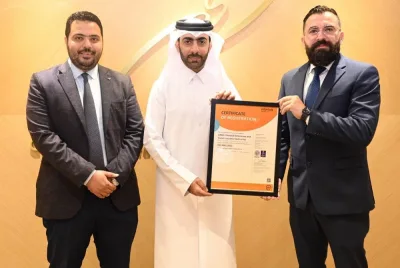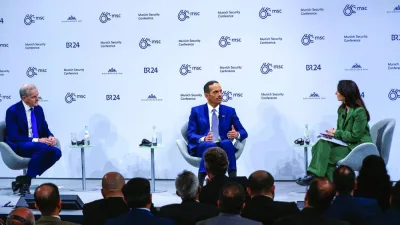Qatar’s plans to achieve drinking water security have made progress with French building materials company Saint Gobain PAM signing two deals worth €200mn to supply pipes for five mega-reservoirs in the country.
An announcement posted on the French multinational corporation’s website said the contracts involved the supply of large diametre pipes, fittings and valves, which will be mainly manufactured in France.
“The contracts are part of the ‘Security Mega Reservoirs’ project managed by Qatar General Electricity and Water Corporation (Kahramaa), which aims to provide the country with a seven-day emergency supply of drinking water,” it added.
Saint Gobain has signed the close to a billion-riyal agreement with Al Jaber Engineering, one of the major contractors of the multi-billion riyal project.
Kahramaa had set in motion the process of building five primary reservoir and pumping station (PRPS) packages as part of its Water Security Mega Reservoirs project in April this year.
The objective of the project is to provide seven days’ potable water storage in new reservoirs, combined with the existing and future secondary reservoirs, to preserve Qatar’s water quality in line with Kahramaa and World Health Organisation standards. Earlier, Kahramaa had announced the tender for local and international companies to bid for construction of the PRPS packages.
“It (the project) is hugely significant for the utilities sector in the region and globally. As the largest-ever water security undertaking, it is sure to have an impact around the world where other countries are seeking to ensure strategic water supplies for their populations,” Kamiran Ibrahim, managing director, utilities, at Hyder Consulting, the detail design and site supervision consultant on the project, had said on the occasion.
The five mega reservoir sites are located at Umm Birka, Umm Salal, Al Thumama, Rawdhat Rashid and Abu Nakhla.
The project entails the construction of the mega reservoirs and approximately 200km of large-diameter ring mains. Each reservoir site will ultimately include up to nine reservoir modules, each of which will be among the largest of its type in the world.
The reservoirs and pipeline network, with associated pumping stations, will provide up to 17mn cubic metres of strategic potable water storage. A massive ring main system will be provided between the independent water and power generation plants, allowing water to flow from north to south and vice-versa, so that it may be delivered to any location in eastern Qatar irrespective of water availability.
Hyder has been working closely with Kahramaa since March 2012 to fast-track the unique design of mega reservoirs, pumping stations and pipework to meet its client’s ambitious programme.
This technically demanding undertaking involves complex hydraulics and operational philosophies, mixed with the engineering and stakeholder challenges associated with delivering such significant volumes of water storage and networking, a company spokesman said.
Hyder has devised a detailed fast-track design, procurement and construction sequence to achieve project completion as scheduled in 2017.
According to earlier reports, the pumping stations will be powered by electricity generated by solar panels.
Solar equipment will be installed on the surface of reservoirs to generate electricity, enabling each reservoir to function independently using solar power in case of any emergency.
Though a desert country with hardly any freshwater resources, Qatar’s water usage is among the highest in the world per capita. Qatar has initiated several measures, the most important being Tarsheed, to create awareness about the need to use water and electricity wisely.
In April this year, the Minister of Energy and Industry HE Dr Mohamed bin Saleh al-Sada said the ongoing Tarsheed campaign for the conservation and efficient use of energy and water has helped the country reduce consumption substantially in the past one year.
He pointed out that there had been a 10% reduction in the consumption of electricity and 6% in water in 2013-14 compared to the previous year.
Water is a key issue in Gulf states where most supplies come from desalination facilities. The region generates about 40% of total desalinated water in the world.



